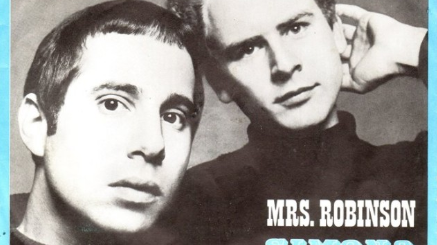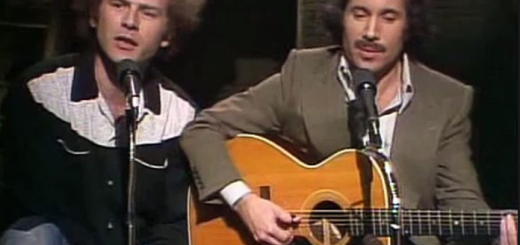02. Leaves that are Green by Simon & Garfunkel Lyrics Meaning – The Ever-Changing Seasons of Life
Lyrics
I’m twenty-two now but I won’t be for long
Time hurries on
And the leaves that are green
Turn to brown
And they wither in the wind
And they crumble in your hand
Once my heart was filled with the love of a girl
I held her close but she faded in the night
Like a poem I meant to write
And the leaves that are green
Turn to brown
And they wither with the wind
And they crumble in your hand
I threw a pebble in a brook
And watched the ripples run away
And they never made a sound
And the leaves that are green
Turn to brown
And they wither iwith the wind
And they crumble in your hand
Hello, hello, hello, hello
Goodbye, goodbye, goodbye, goodbye
That’s all there is
And the leaves that are green
Turn to brown
In the annals of folk music, some songs transcend mere melody and rhythm to become poignant reflections of human experience. Simon & Garfunkel’s ‘Leaves that are Green’ is one such lyrical journey—a brief but luminous track off their 1966 album ‘Sounds of Silence’, which captures the essence of change and the inexorable march of time.
At its core, the song is a musical articulation of the passage from spring to winter, from vibrancy to stillness, from youth to older age. The song reflects the universality of change, using powerful imagery and a haunting melody to evoke a sense of reflection and nostalgia, poignantly noting that all we see and all we seem to hold dear is subject to the wait of time’s ever-moving hands.
A Youthful Scribe’s Momento Mori
Simon & Garfunkel deliver a timeless message within the span of mere minutes, as Paul Simon, the youthful scribe, opens with a simple fact—he was twenty-one when he wrote the song, swiftly followed by the awareness that he won’t be twenty-two for long. There’s an intimate acknowledgment of the brevity of youth, mirrored in the changing state of leaves. Much like the fleeting nature of the seasons, Simon stresses that the period of life that feels so vibrant and boundless is, in truth, ephemeral.
The song suggests a premature confrontation with mortality, a theme that’s often lingered in the background of many young artists’ works, suggesting a foresight and depth well beyond their years. Simon encapsulates the wisdom of an old soul coming to terms with the impermanence of everything he knows—be it youth, love, or the simple surroundings of nature.
From Foliage to Philosophy: The Hidden Meaning
Beneath its folk serenade, ‘Leaves that are Green’ is festooned with existential commentary. This is not just a song about seasons or lost love, it’s a musing on the human condition. The transformation of leaves represents more than nature’s cyclic beauty; it’s a metaphor for life’s transient passages, for dreams unfurled and then folded away in the withering winds of time.
The song carries an underlying message about the inevitability of change and loss as much as it reflects the acceptance of life’s fleeting nature. From the vibrancy of green to the stillness of brown, the leaves’ metamorphosis in the song is a mirror held up to our own life changes—encouraging a perspective of appreciation, presence, and perhaps, preparation.
A Lover’s Lament: The Romance of Ephemera
The poignancy deepens as Simon reflects on the love of a girl—tangible and powerful in one moment, yet in the next, no different than the leaves. The love that once filled his heart, ‘faded in the night / Like a poem I meant to write’, evoking the intimate sorrow of unfinished expressions and the untouchable nature of memory.
This bittersweet elegy to love lost is as much an ode to the creative process as to the romance itself. The unfinished poem is a lost artwork of the mind, one that can no longer capture the vividness of the moment, much like the crumbled brown leaves that once embodied life’s vitality.
The Ripple Effect of a Pebble in a Brook
Amidst the fading and crumbling, there is a moment of action—a pebble thrown, ripples created, though they never made a sound. This subtle imagery slides into the greater theme: our actions, howsoever small, create ripples in the grand expanse of time, often without recognition or remembrance.
In the grand scale of time and nature, a singular action may seem insignificant, yet for the individual, it is these actions that define existence. Simon prompts the listener to consider the legacy left behind, the ripples of one’s life—acknowledging that the soundless ripples may be the only evidence of our passage.
The Most Memorable Lines: A Distilled Wisdom
‘Hello, hello, hello, hello / Goodbye, goodbye, goodbye, goodbye / That’s all there is’. These repetitious greetings and farewells are more than a simple hello-and-goodbye routine. They encapsulate the whole of human experience—arrivals and departures, meetings and partings, beginnings, and endings—with an understanding that life is a series of ephemeral moments.
These lines serve as a stoic mantra, an acceptance of life’s condensed truths wrapped within Simon’s hypnotic melody. It’s this distilled wisdom that grants ‘Leaves that are Green’ its timeless resonance, affirming that while time may hurry on, and leaves will brown, the song’s introspection remains, agelessly tethered to the soul of the listener.







